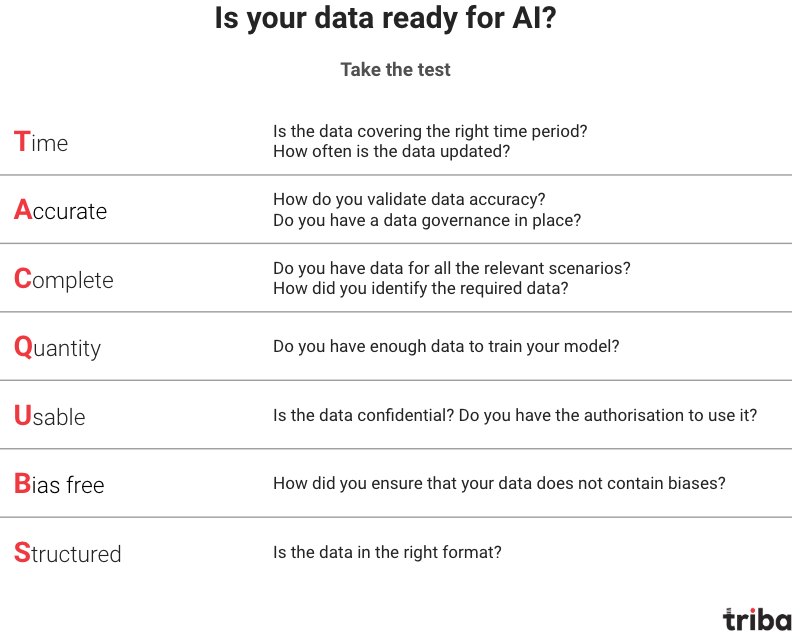No Artificial Intelligence (AI) Without Data
Data is at the core of artificial intelligence; it’s often said that AI thrives on data. In fact, training a machine learning model can require over 10,000 data points!
According to USAII, 60% to 80% of the time dedicated to an AI project is spent on collecting, organizing, and cleaning data.
Whether AI is in your short or long-term plans, it’s essential to understand the current state of data in your company. Are you ready for artificial intelligence?
How is Your Data Doing? (Test THECQUES)
We have developed the following tool to help you quickly assess if your data is ready for artificial intelligence.
Are you ready to take the TECQUES test?

You don’t have all the answers? Don’t worry, you’re part of the majority. In fact, only 4% of tech leaders say their data is ready for Artificial Intelligence (Gartner, 2024).
The Data Dictionary, Your Starting Point
The first step is to establish a data dictionary. It’s a simple file, which can be created in a spreadsheet like Excel, where you record the following information:
- Information about your data
- The processes that use or generate this data
- Different KPIs
Information About Your Data
It’s up to you to decide what information is relevant for your organization. Here’s a list of examples to inspire you.
- Attributes such as format, size, etc.
- Data owner and roles with access
- Source of the data
- Frequency of data collection
- Where the data is stored
Processes That Use or Generate This Data
It’s important to have a list of well-defined processes to determine the data they generate or use.
For instance, Six Sigma tools like FIPEQ (SIPOQ) or RACI can be highly useful when creating a data dictionary as they help clearly identify stakeholders for each process. A RACI matrix outlining roles and responsibilities for data collection and maintenance is also a crucial element of a data strategy.
Performance Indicators (KPIs)
Creating a data dictionary is an excellent opportunity to review your performance indicators. I invite you to read our article, which offers useful tips on how to use your data strategically and systematically.
Are You Ready to Get Started?
As we’ve seen, data is at the heart of AI, and it’s essential to ensure that your data is ready before embarking on an artificial intelligence project.
A detailed data dictionary will give you a clear vision of your data and the processes that use or generate it. It will also help you review your performance indicators (KPIs) to use your data more strategically.
Once this groundwork is completed, you’ll be able to assess if your data is truly ready for AI using the TECQUES test mentioned earlier. This will allow you to identify areas for improvement and adequately prepare to make the most of artificial intelligence.
Take the necessary time to properly prepare your data, as it’s a critical prerequisite for the success of your AI initiatives. With the right elements in place, you can confidently embark on your artificial intelligence journey!
Generative AI was used to optimize this article for SEO.
References
United States Artificial Intelligence Institute, Certified AI transformation leader training material, 2023.

